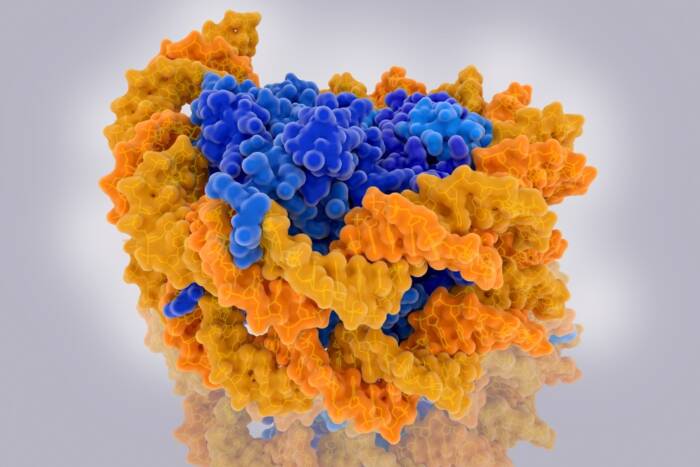Telomerase researchers honored with Pearl Meister Greengard Prize
by TALLEY HENNING BROWN

Defenders of DNA. From left to right, the 2008 Pearl Meister Greengard Prize recipients Vicki Lundblad, Carol W. Greider and Elizabeth H. Blackburn.
The Pearl Meister Greengard Prize, Rockefeller University’s annual award for outstanding women in science, was presented this year to three scientists who together established the field of telomerase research. Elizabeth H. Blackburn of the University of California, San Francisco, Carol W. Greider of The Johns Hopkins University School of Medicine and Vicki Lundblad of the Salk Institute for Biological Studies have elucidated how telomeres, which protect the integrity of chromosomes, are themselves protected by the enzyme telomerase. The women’s pathbreaking achievements were honored at a ceremony in Caspary Auditorium on March 26.
The Pearl Meister Greengard Prize was established by Paul Greengard, Vincent Astor Professor and head of the Laboratory of Molecular and Cellular Neuroscience, and his wife, sculptor Ursula von Rydingsvard. Dr. Greengard contributed the proceeds of his 2000 Nobel Prize in Physiology or Medicine to Rockefeller University and, in partnership with supporters of the university, created the yearly award. Named in memory of Dr. Greengard’s mother, the prize was founded to bring attention to the contributions of extraordinary women scientists, which often do not receive appropriate recognition and acclaim.
The 2008 prize recognizes Drs. Blackburn, Greider and Lundblad for their discovery of the enzyme telomerase and studies of its regulation. Telomerase maintains repeated DNA sequences, called telomeres, at the ends of chromosomes. Working with yeast and other unicellular organisms, the three women made seminal discoveries that have laid the foundation for our current understanding of the role of telomerase in human aging and cancer. Without telomerase, telomeres wither away, eventually leading to cell death. Telomerase is active in stem cells and germ-line cells, which are programmed to divide indefinitely, but not in normal human tissues, where cells have a limited life span. In human tumors, telomerase is reactivated, endowing human cancer cells with immortality.
Dr. Blackburn, who is Morris Herzstein Professor of Biology and Physiology in UC San Francisco’s department of biochemistry and biophysics, discovered telomerase in 1985, together with her graduate student, Carol Greider. The Blackburn laboratory has since become a leader in manipulating telomerase activity in cells, and Dr. Blackburn’s research focuses on the variety of effects the process has on cells. Dr. Greider, who is now the Daniel Nathans Professor and director of the molecular biology and genetics department at Johns Hopkins, used modeling in mice to study the impact of telomerase deficiency on organ homeostasis and life span. Dr. Lundblad, a professor in the Molecular and Cell Biology Laboratory at the Salk Institute, has discovered the genes that encode for telomerase proteins in yeast and shown that yeast lacking telomerase lose their telomeres and eventually die.
“Together, the work of our three awardees meant that the fountain of cellular youth had been discovered. For the first time, the wider scientific community began taking an interest in telomeres and telomerase,” said Titia de Lange, Leon Hess Professor and head of the Laboratory of Cell Biology and Genetics and a presenter at the March 26 award ceremony. The evening also included remarks by guest speaker Mary Robinson, president of Realizing Rights: The Ethical Globalization Initiative, former president of Ireland and former United Nations High Commissioner for Human Rights. The Pearl Meister Greengard Prize comes with $50,000, which the three recipients will share.


